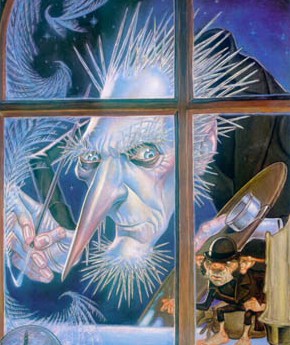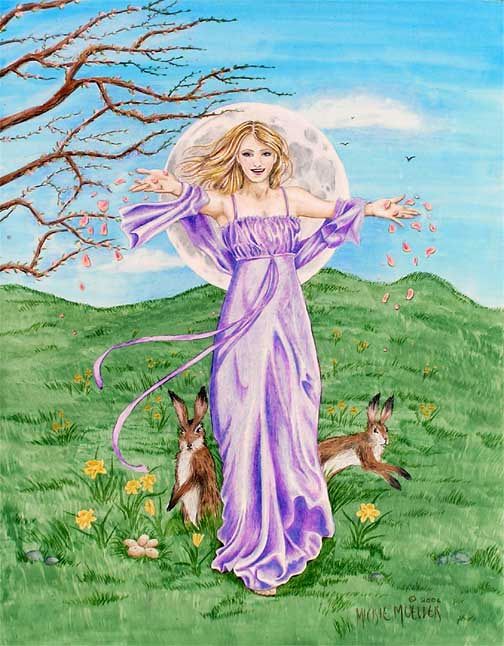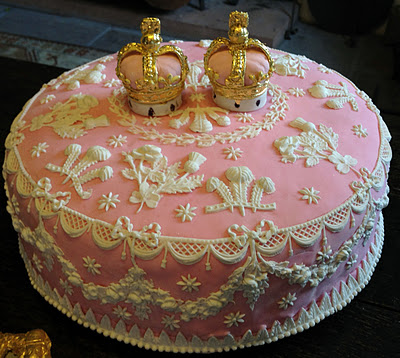
At this time of year we are expected to emanate peace & good will to mankind, & to celebrate a birth/rebirth. We at SRTB notice that alongside this very dominant theme, and woven into our winter mythology, are the archetypal strands of ‘Father Winter’ & ‘The Gift Giver’. It is upon these facets that we focus our attention for our Midwinter/Christmas post.
These two aspects of the winter archetype have been in our opinion somewhat neglected, with the gift bringer being reduced to a jolly old elf whose image is derived from a coca-cola advertisement. The Disneyesque image of ‘Jack Frost’ is all that seemingly remains of the once powerful ‘Father Winter’. (This is not to demean either of these as valid contemporary archetypes).
Let us now take a closer look at the primary forces behind these two entities. One delivers the gifts to the hearth; bringing warmth & cheer, the other drives us inside, out of the bitter winter air.
At Midsummer where the green abounds outside & there is no need to bring it into the hearth, we see an outward movement, and relish the long days & fine weather.
In contrast, Midwinter with its long nights finds us bringing in the green, as outside is inhospitable & hearth fires replace the sun; this is an inward movement the perfect time for reflection, inner journeying, & storytelling. The Midwinter gift we receive being the rebirth of the Sun.
Does the gift giver exist?……. There is an old Basque saying “That everything that has a name exists, if we believe it does”. Whichever magickal model you work with, be it Archetypal, Deific or other; it is our belief that those of us who celebrate this season, are manifesting the ‘Gift Giver’. As Santa descends the chimney, delivering gifts to the hearth, so does the Christmas spirit enter into our hearts.
Children delight in the magical image of Santa Claus, with his treasure laden sleigh & team of flying reindeer. Rudolph is the light bearer/way shower & Santa’s guide, keeping him on course during his nights work.
With christmas trees & decorations appearing in shopping malls in September, it is maybe harder for adults to retain and experience the midwinter magic of childhood.
What are the origins of this figure that inspires such delight & anticipation in the young? When the the tales of St Nicholas (4th century Bishop of Myra) spread throughout northern Europe, they collided with the culture and myth of Norse folk. Where once Odin rode his chariot, pulled by his 8-legged horse, Sleipnir filling the boots/sacks of children in exchange for the gifts that they had in turn left out. These gifts were often carrots or straw for his steed, in much the same way that children today leave out a mince pie and glass of cheer on Christmas Eve. The boot became a stocking, the eight legged horse became the team of reindeer. Those aspects of the veneration of Odin were under Christianity, put onto St. Nicolas. Who now as ‘Sinterklaas’ received a nordic look, a white beard & a sleigh, thus enabling Christians to keep old traditions alive whilst remaining faithful to their new religion. In the British Isles the once prominent Germanic Woden, did not merge with St Nicholas who was not part of the British psyche. Instead a new character emerged analogous in appearance to Dickens’ 2nd spirit in ‘A Christmas Carol’. Thus Father Christmas was created…..An elderly white bearded tall man, wearing fur trimmed green garments and dark boots, carrying a large sack.
A contemporary tale finds one of Odins Warriors left behind during the wild hunt, in a story which provides a different take on the origins of Santa Claus.
http://tarotcanada.org/GermanChristmas.html
Although the gift giver has traditionally been seen in male form, the feminine archetype does find expression in traditional figures & tales, such as Strina/Strenia, La Befana and Babushka.
Across Europe the Gift Giver is often found paired with a companion, appearing in the guise of Knecht Ruprecht (Farmhand Rupert), Krampus, Zwarte Piet (Black Pete), Belsnickel (Wallop), La Pere Fouettard (Father Whipper) and others, dependent upon local tradition. These companions often appear as cloven-hoofed, black-faced, horned demons clad in black rags or as sinister or rustic versions of Nicholas himself, carrying sticks or sacks and either bound with or dragging heavy chains.
Tradition has it that children hang up their stockings on Christmas Eve, in hope that that they will receive the gifts they desire. They in turn leave small gifts for Santa and his reindeer before retiring to bed. On awakening next morning, if they have been good they find their stocking full of gifts. Those however who do not say their prayers, behave badly throughout the year, do not sleep or fail to leave an appropriate offering, find that Santa has left them nothing. Perhaps his companion has taken the presents or replaced them with decidedly unwanted ones, for instance in the UK a common childhood threat is “If you don’t behave, you will get coal for Christmas”. Those children whose conduct is found particularly wanting, suffer far worse at the hands of the companions; being beaten with sticks or stuffed into the sacks and taken away to be drowned or eaten.
These companions may be predate Christianity, their origin being local gods, spirits or faeries. According to Jacob Grimm (Deutsche Mythologie) these characters were synonymous with the pagan house spirit, (kobold, elf) which could be benevolent or malicious, but whose mischievous side was emphasised after Christianisation.
SO OLD GODS TURNED INTO THE DEVIL?
St Nicholas defeats the devil binds him in chains and forces him into a period of servitude. It is interesting to note here that beating & devouring naughty children is fine as long as it is the Devil doing the dirty work and not the Saint, although clearly the former is in the service of the latter.
Today we are left with a diluted Odin archetype transformed into a jolly old man, with his companions now harmless elf toy makers. The original pairings (still surviving in parts of NorthernEurope/USA) carry a true-life message, that life is not all gifts and joy and that hard lessons are to be encountered.
Let us turn our attention to the other archetype in our narrative ‘Father Winter’. In popular culture the best known is Jack frost, the trickster who nips your nose & toes and trips you up if you’re not careful. In the days before double glazing he would leave behind an incredibly beautiful pattern on window panes. During his reign we have fun building snowmen, having snowball fights & playing winter games.
There are many feminine expressions of this cold archetype i.e. The beautiful but lethal Yuki-Onna a Japanese spirit of winter, who uses her icy breath to leave snow bound travellers as frost coated corpses or to lead them astray to die of exposure.
The Callieach, known as the old hag of winter, begins her reign at Samhain. With a giant hammer she strikes the earth until cracks of frost appear and the land is covered with ice.
Skadi, the Norse embodiment of winter, is known to have a short temper and affect the winter weather, in her more helpful aspect she is attributed with creating snow shoes and skis.
Louhi, a Finnish witch goddess, kidnapped the Sun and Moon and held them captive inside a mountain, resulting in the world’s first Winter Solstice. She was eventually forced to return the celestial bodies allowing the light to be restored.
Literary figures include the ‘Snow Queen’ and the ‘Queen of Narnia’, she who seduces with gifts of turkish delight, but be warned, if you displease her she will turn you to stone. This treacherous seduction is reflected in Narnia’s landscape, which although held eternally in the grip of winter is a Kingdom where Christmas never comes. Here we identify a powerful theme, a slowing down, an inertia, a solidified Earth which is at rest from growth. We know however that nothing is completely without movement or without hope of the eventual gift…. The return of the Sun, ‘The Christ Child’ or Aslan.
The following brings together many of the above themes, in the evolving tale of ‘Ded Moroz’. Originally a sorcerer god in Slavic myth, he froze people and kidnapped children, requiring parents to pay him a ransom in return for their offspring.
Under Orthodox Christianity he was transformed, adopting traits from the ‘Sinter Klass’ of the low countries, to become the Russian ‘Santa Claus’. By the end of the 19th century he had become the most popular of the various gift givers in Russia.
Following the Russian revolution Christmas was discouraged on the grounds that it was bourgeois, instead celebrations were moved to the New Year and Ded Moroz was reinstated as the New Year gift giver. It was at this time that he acquired a female helper/companion named ‘Snegurochka’, a Snow Maiden from folklore. She is often depicted in long silver-blue robes and a furry cap or a snowflake-like crown. She is a unique attribute of Ded Moroz; no traditional gift-givers from other cultures are portrayed with a female companion, as far back & as far as we are aware.
The development of Ded Moroz under both religious & political influence sees this destructive/icy figure becoming the benevolent bringer of gifts. The twin aspects of the Winter archetype are both contained in the one. He is both taker & giver.
We at SRTB wish you all where ever you may be a Happy, Bright & Peaceful Mindwinter/Christmastide!









